|
Books Should Be Free Loyal Books Free Public Domain Audiobooks & eBook Downloads |
|
|
Books Should Be Free Loyal Books Free Public Domain Audiobooks & eBook Downloads |
|
Fiction |
|---|
|
Book type:
Sort by:
View by:
|
By: Carey Rockwell | |
|---|---|
 Danger in Deep Space (Dramatic Reading)
Danger in Deep Space (Dramatic Reading)
The year is 2353. Tom Corbett is a cadet with the Space Academy, training to become a member of the elite Solar Guard. Sent on a top-secret mission across the stars, Tom and his fellow crew members discover the nature of true loyalty, as they battle against danger in deep space. | |
By: Carl Sandburg (1878-1967) | |
|---|---|
 Rootabaga Stories
Rootabaga Stories
Carl Sandburg is beloved by generations of children for his Rootabaga Stories and Rootabaga Pigeons (which is not in the public domain), a series of whimsical, sometimes melancholy stories he originally created for his own daughters. The Rootabaga Stories were born of Sandburg’s desire for “American fairy tales” to match American childhood. He felt that the European stories involving royalty and knights were inappropriate, and so populated his stories with animals, skyscrapers, trains, corn fairies, and other colorful characters. | |
By: Carlo Collodi (1826-1890) | |
|---|---|
 Pinocchio
Pinocchio
This is the wonderful story of Pinocchio, the puppet who must learn many lessons before he can become a real boy. Carved by a woodcarver named Geppetto in a small Italian village, he dreamed of becoming a real boy but strays from the path of goodness many times and is very willing to listen to temptation. He has also been used as a character who is prone to telling lies and fabricating stories for various reasons. The story has appeared in many adaptations in other mediums. Pinocchio has been called an icon of modern culture, and one of most reimagined characters in the pantheon of children's literature... | |
By: Caroline Lockhart (1871-1962) | |
|---|---|
 The Fighting Shepherdess
The Fighting Shepherdess
A classic style western written by one of the first female western writers. Caroline Lockhart was a rancher, writer and possibly the first woman to go over Glacier National Parks Swiftcurrent Pass. | |
By: Caroline Snowden Guild | |
|---|---|
 Violet: A Fairy Story
Violet: A Fairy Story
A charming fairytale -- with realistic touches -- from the mid-19th Century. | |
By: Carolyn Steward Taylor | |
|---|---|
 Werewolf -- Five Pieces
Werewolf -- Five Pieces
Five stories and essays about werewolves. | |
By: Carolyn Wells (1862-1942) | |
|---|---|
 The Jingle Book
The Jingle Book
A collection of silly poetry and limericks for children. | |
 Curved Blades
Curved Blades
In this suspensful whodunit a mean-spirited and wealthy dowager is found murdered in her boudoir supposedly killed once by poison and also by a blow to the head. Most bizarre is the fact that she is found sitting in front of her mirror lavishly dressed wearing a fortune in pearls and gems. Her niece, her social secretary, her cousin managing her finances, a mysterious count and a maid acting rather suspiciously are the suspects. The police are getting nowhere so famous criminologist Fleming Stone is called in. However is it possible he is so taken with the primary suspect that she could prevent him from solving the mystery??? - Summary by Celine Major | |
 Clue
Clue
Once Carolyn Wells began, or re-invented her writing career, 'The Clue' was her initial book which strayed from children's writings into mysteries and detective stories. It is also when we are introduced to her most famous of detectives, Fleming Stone. On the eve of her wedding day, Madeleine Van Norman, a beautiful young lady who is soon to come into her family fortune is found dead, apparently stabbed with an ominous blood-stained letter opener found nearby. There is nobody within the household... | |
 Deep Lake Mystery
Deep Lake Mystery
Imagine, if you will, a murder committed in a sealed room. A room which has been sealed from the inside, that is, with no possible means of exit, excepting a dangerous plunge through a window into a deep, foreboding lake with swirling eddies and rocks abound. Add to that image a wreath of flowers around the head and across the chest of the victim, a crucifix, an orange, a feather scarf tucked in here and there, two crackers, a handkerchief, and a feather duster. And a nail. Oh, and one more item to add to the curious array of arranged paraphenalia - a watch in a water pitcher by the bedside... | |
 Anybody But Anne
Anybody But Anne
Narrated in the first person by Raymond Sturgis, Anne's old high-school beau, the story opens with a lavish house party hosted by the Van Wycks. David Van Wyck has suddenly decided to become a philanthropist and proposes to give away his entire fortune to the building of a new library in the community, thus leaving his family penniless. The morning following his late meeting with the library committee, David is found dead in his locked study. The Van Wyck pearls are missing as is the deed giving away the fortune... | |
 Man Who Fell Through the Earth
Man Who Fell Through the Earth
A lawyer is leaving his office on the top floor of an office building. He sees the shadows of two men fighting through the clouded glass of an office door followed by a shot from the office across the hall. He goes to investigate. He finds no sign of either victim or assailant despite the fact that no one could have passed him in the hallway without being seen. A murder has been committed, that of the banker. Who is the murderer? A business associate, the banker’s beautiful ward, or a mysterious... | |
By: Carroll Watson Rankin (1864-1945) | |
|---|---|
 Dandelion Cottage
Dandelion Cottage
Carroll Watson Rankin's best known novel is Dandelion Cottage, published in 1904 by Henry Holt and Company. She first wrote the story serially for her own children. Considered a regional classic in the midwest, it tells of four young girls who negotiate the use of a derelict cottage as a playhouse by pulling dandelions for the owner, prosperous Mr. Black. The real life model for Mr. Black is generally acknowledged to be Marquette businessman and philanthropist, Peter White. The original Dandelion Cottage is located at 440 East Arch and is privately owned. | |
 The Cinder Pond
The Cinder Pond
Years ago, a manufacturer built a great dock, jutting out from and then turning parallel to the shore of a northern Michigan town. The factory was abandoned, and following the habits of small towns, the space between the dock and the shore became "The Cinder Pond." Jean started life in the colony of squatters that came to live in the shanties on the dock, but fortune, heroism, and a mystery combine to change her fortunes and those of her friends near the Cinder Pond. (Advertising material from the publisher, 1915) More than one girl who reads this story will envy Jeanne her queer little home out on the end of the old dock in Lake Superior... | |
 The Girls of Gardenville
The Girls of Gardenville
It is pleasant to have another book about a group of merry, natural girls, who have the attractions of innocence and youthful faults. "The Sweet Sixteen" Club made fudge, and went on picnics, and behaved just as jolly, nice maidens should. (The Outlook, vol. 82, Mar. 24, 1906) | |
By: Castello Newton Holford (1844-1905) | |
|---|---|
 Aristopia: A Romance-History of the New World
Aristopia: A Romance-History of the New World
Aristopia (published 1895) is truly an alternative history. It is an imagination of how the continent of North America might have developed if one man with the vision, altruism and determination to build a state for the benefit of all its people had been in the happy position of having wealth enough to make his dream a reality. It is an interesting book which deserves its place in literary history largely for being the first novel-length example of its genre. It is written, not as a novel, but as unvarnished history... | |
By: Catherine Anne Hubback (1818-1877) | |
|---|---|
 Younger Sister
Younger Sister
Emma Watson, the youngest child of six from a poor family, was sent away as a child to be raised by her wealthy aunt and uncle. When her uncle dies and her aunt remarries, Emma returns home to help care for her ailing father and reconnect with her estranged siblings. She quickly must learn how to behave among the less affluent and navigate her way through the affections of many young men vying for her attention. The Younger Sister is the first published completion of Jane Austen's unfinished novel The Watsons. | |
By: Catherine Grace Frances Gore (1798-1861) | |
|---|---|
 Mrs. Armytage, or Female Domination
Mrs. Armytage, or Female Domination
Mrs Armytage is a widowed landowner, spirited, independent and very much used to having her own way and exercising total dominance over her family. She is acutely aware of social distinctions, proud of her power and prestige, and stands on her dignity to the point of becoming cold, judgemental and aloof. Her character flaws bring her into conflict with her children when her son Arthur announces his choice of a wife who is very much below their rank, and much will happen before Mrs Armytage learns to repent her behaviour... | |
By: Catherine Helen Spence (1825-1910) | |
|---|---|
 Mr. Hogarth's Will
Mr. Hogarth's Will
Jane and Elsie Melville were raised by their kindly but eccentric uncle, Mr Hogarth who believed that women were just as good as men, and thus gave his nieces a boy’s education. Upon his death, they find that he has left his entire fortune to his heretofore unknown son and left them only a small allowance, expecting them to make their own way in the world using the education he furnished them. Will the girls survive in a world that expects them, at the most, to become governesses? | |
By: Cecil Henry Bompas | |
|---|---|
 Folklore of the Santal Parganas
Folklore of the Santal Parganas
This is an intriguing collection of folklore from the Santal Parganas, a district in India located about 150 miles from Calcutta. As its Preface implies, this collection is intended to give an unadulterated view of a culture through its folklore. It contains a variety of stories about different aspects of life, including family and marriage, religion, and work. In this first volume, taken from Part I, each story is centered around a particular human character. These range from the charmingly clever (as in the character, The Oilman, in the story, “The Oilman and His Sons”) to the tragically comical (as in the character, Jhore, in the story “Bajun and Jhore”)... | |
By: Charles Alexander Eastman (1858-1939) | |
|---|---|
 Indian Child Life
Indian Child Life
The author was raised as an American Indian and describes what it was like to be an Indian boy (the first 7 chapters) and an Indian Girl (the last 7 chapters). This is very different from the slanted way the white man tried to picture them as 'savages' and 'brutes.'Quote: Dear Children:—You will like to know that the man who wrote these true stories is himself one of the people he describes so pleasantly and so lovingly for you. He hopes that when you have finished this book, the Indians will seem to you very real and very friendly... | |
By: Charles B. Cory (1857-1921) | |
|---|---|
 Montezuma's Castle and Other Weird Tales
Montezuma's Castle and Other Weird Tales
This is a collection of weird tales inspired from the natural history expeditions of the author, an independently wealthy bird collector, Olympic golfer, writer of many books on birds of the world, and, as evidenced in these pages, a fine storyteller to boot. | |
By: Charles Brockden Brown | |
|---|---|
 Arthur Mervyn
Arthur Mervyn
Kicked out of his parental home by his scheming young stepmother, a young country boy, Arthur Mervyn arrives in Philadelphia. Here he finds the city in the throes of a deadly yellow-fever epidemic. However, he finds a small job as a clerk and is determined to make his way in the world. He soon discovers that his employer is a con man and a murderer. One night, Arthur helps him dispose of a body in the river. While they're struggling with the corpse, the employer is swept away by the current... If you haven't encountered American Gothic before, Arthur Mervyn by Charles Brockden Brown is a great introduction to this genre... | |
By: Charles Clark Munn (1848-1917) | |
|---|---|
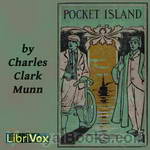 Pocket Island
Pocket Island
Along the coast of Maine are littered thousands of small islands. One such, named 'Pocket Island' by the locals was so called because of a pocket formed twice daily by the waning of the tides. The coast of Maine holds many secrets and legends, and Pocket Island was no exception. Subtitled "A Story of Country Life in New England", this story holds such varied and fascinating glimpses into the lives of a few individuals, and is not limited to merely a story of ghosts, of war, of barn dances, friendship, tales of rum-runners, smugglers, and seafarers... | |
By: Charles Dickens | |
|---|---|
 Great Expectations
Great Expectations
From the opening passage itself of Great Expectations by Charles Dickens, the reader is drawn into the world of the hero, Pip, who is at that time, seven years old. The author creates an unforgettable atmosphere: the gloom of the graveyard, the melancholy of the orphan boy, the mists rising over the marshes and the terrifying appearance of an escaped convict in chains. Told in first person (one of the only two books that Dickens used this form for, the other being David Copperfield) Great Expectations is a classic coming of age novel, in which we trace the growth and evolution of Pip or Philip Pirrip to give his full name... | |
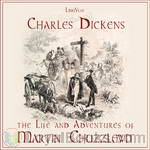 The Life and Adventures of Martin Chuzzlewit
The Life and Adventures of Martin Chuzzlewit
Dickens thought it was “in a hundred points, immeasurably the best” of his stories. Yet it was also one of his greatest flops. Compared to his other novels, The Life and Adventures of Martin Chuzzlewit was a dismal failure in terms of sales and the main reason for Dickens falling out with his long term publisher Chapman & Hall. They invoked a penalty clause and demanded that he pay back a portion of the advance which he refused. Martin Chuzzlewit was also dimly received in Dickens friendly America... | |
 Three Ghost Stories
Three Ghost Stories
As a gifted writer with a strong interest in supernatural phenomena, Charles Dickens produced a string of ghost stories with enduring charm. Three of them are presented here, of which The Signal Man is one of the best known. Though quite different from his most celebrated realistic and humorous critical novels, these ghost stories, Gothic and grotesque as they are, are of good portrayal, and worth a read/listen. Summary by Vivian Chan | |
 A Child's History of England
A Child's History of England
A Child’s History of England first appeared in serial form, running from January 25, 1851 to December 10, 1853 and was first published in three volume book form in 1852, 1853, and 1854. Dickens dedicated the book to “My own dear children, whom I hope it may help, bye and bye, to read with interest larger and better books on the same subject”. The history covered the period between 50 BC and 1689, ending with a chapter summarising events from then until the ascension of Queen Victoria. | |
 Little Dorrit
Little Dorrit
Originally published in monthly installments between 1855 and 1857, the novel focuses on the various forms of imprisonment, both physical and psychological, while also concentrating on dysfunctional family ties. Accordingly, Dickens avidly criticizes the social deficiencies of the time including injustice, social hypocrisy, the austerity of the Marshalsea debtors’ prison, and bureaucratic inefficiency. The novel kicks off with the introduction of William Dorrit, the oldest prisoner in the Marshalsea prison, who is also referred to as The Father of the Marshalsea... | |
 The Mystery of Edwin Drood
The Mystery of Edwin Drood
The Mystery of Edwin Drood is the final novel by Charles Dickens. It is a mystery indeed; the serial novel was just half completed at the time of Dickens’ death – leading to much speculation how it might have ended.The novel is named after Edwin Drood, one of the characters, but it mostly tells the story of his uncle, a choirmaster named John Jasper, who is in love with his pupil, Rosa Bud. Miss Bud is Drood’s fiancée, and has also caught the eye of the high-spirited and hot-tempered Neville Landless! Landless comes from Ceylon with his twin sister, Helena... | |
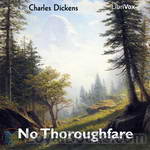 No Thoroughfare
No Thoroughfare
Two boys from the Foundling Hospital are given the same name, with disastrous consequences in adulthood. Two associates, wishing to right the wrong, are commissioned to find a missing heir. Their quest takes them from fungous wine cellars in the City of London to the sunshine of the Mediterranean — across the Alps in winter. Danger and treachery would prevail were it not for the courage of the heroine and the faithful company servant. The story contains crafted descriptions, well-drawn and diverse... | |
 A House to Let
A House to Let
A House to Let is a novella originally published in 1858 in the Christmas edition of Dickens’ Household Words magazine. Each of the contributors wrote a chapter (stories within a story, and in the case of Adelaide Anne Procter, as a story in verse) and the whole was edited by Dickens. The plot concerns an elderly woman, Sophonisba, who notices signs of life in a supposedly empty dilapidated house (the eponymous “House to Let”) opposite her own, and employs the efforts of an elderly admirer, Jabez Jarber, and her servant, Trottle, to discover what is happening within. | |
 The Battle of Life
The Battle of Life
While "The Battle of Life" is one of Charles Dickens' Christmas Books - his annual release of a story just before Christmas - this one breaks the tradition by not being concerned with Christmas. Rather, its subtitle, "A Love Story", reveals more of the plot. The major events of this book take place on land that once was a battleground. That is just a backdrop for Dickens' idea of the real battle of life - finding and winning the right partner, so that life will go on to the next generation. The family that lives there is rather confused in its affections and intentions regarding who should end up with whom... | |
 The Cricket on the Hearth
The Cricket on the Hearth
The tale of John Peerybingle, the good-hearted carrier, and his young wife Mary ('Dot'), interwoven with the story of poor toymaker Caleb Plummer, his beloved blind daughter Bertha, and the harsh old toy merchant Tackleton, who is due to marry May Fielding, a childhood friend of Dot. Comic relief is provided by Tilly Slowboy, the disaster-prone nursemaid of John and Dot's baby, and Boxer, the family dog.The cricket who chirps on the family hearth assumes fairy form to save the day when disaster looms in the form of a mysterious stranger... | |
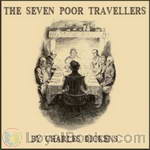 The Seven Poor Travellers
The Seven Poor Travellers
One of Dickens’ Christmas stories, this was first published as part of the Christmas number of Household Words for 1854. The first chapter relates Dickens’ visit to the ancient Richard Watts’s Charity at Rochester. The second chapter is the touching story of “Richard Doubledick”, which Dickens supposedly told the travellers, and Dickens’ journey home on Christmas morning provides the short concluding chapter. | |
 The Chimes
The Chimes
The Chimes: A Goblin Story of Some Bells that Rang an Old Year Out and a New Year In is the second of Charles Dickens' Christmas books, published in 1844. Its contemporary setting is the "Hungry Forties", a time of social and political unrest, and the book has a strong moral message. It remained popular for many years, although its fame has since been eclipsed by that of A Christmas Carol, the first of the series. Our hero Toby ("Trotty") Veck is a poor but hard-working man, whose beloved daughter Meg is due to marry on New Year's Day... | |
 Sketches by Boz: Illustrative of Every-Day Life and Every-Day People
Sketches by Boz: Illustrative of Every-Day Life and Every-Day People
"Sketches by "Boz," Illustrative of Every-day Life and Every-day People (commonly known as Sketches by Boz) is a collection of short pieces published by Charles Dickens in 1836 accompanied by illustrations by George Cruikshank. The 56 sketches concern London scenes and people and are divided into four sections: "Our Parish", "Scenes", "Characters", and "Tales". The material in the first three of these sections is non-fiction. The last section comprises fictional stories. Originally, the sketches were published in various newspapers and periodicals from 1833-1836." | |
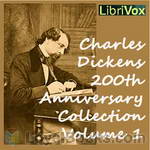 Charles Dickens 200th Anniversary Collection Vol. 1
Charles Dickens 200th Anniversary Collection Vol. 1
The Charles Dickens 200th Anniversary Collection comprises short works - fiction, essays, poetry, letters, magazine articles and speeches - and each volume will be a pot pourri of all genres and periods of his writing. This first volume is released on Dickens' 200th birthday, February 7th 2012. Further volumes will follow during the anniversary year.Volume 1 includes short stories including, amongst others, The Holly Tree, the first part of Holiday Romance and three pieces from Mugby Junction.Some... | |
 The Haunted Man and the Ghost's Bargain
The Haunted Man and the Ghost's Bargain
The Haunted Man and the Ghost’s Bargain, A Fancy for Christmas-Time, (better known as The Haunted Man and the Ghost’s Bargain) is a novella by Charles Dickens first published in 1848. It is the fifth and last of Dickens' Christmas novellas. The story is more about the spirit of the holidays than about the holidays themselves, harking back to the first of the series, A Christmas Carol. The tale centers around a Professor Redlaw and those close to him. | |
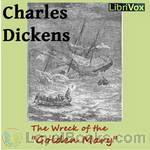 The Wreck of the Golden Mary
The Wreck of the Golden Mary
A short story of a ship wreck in 1851 trying to round Cape Horn on its way to the California gold fields. Poignant and well written. ( | |
 The Uncommercial Traveller
The Uncommercial Traveller
The Uncommercial Traveller is a collection of literary sketches and reminiscences written by Charles Dickens. In 1859 Dickens founded a new journal called All the Year Round and the Uncommercial Traveller articles would be among his main contributions. He seems to have chosen the title and persona of the Uncommercial Traveller as a result of a speech he gave on the 22 December 1859 to the Commercial Travellers' School London in his role as honorary chairman and treasurer. The persona sits well with a writer who liked to travel, not only as a tourist, but also to research and report what he found; visiting Europe, America and giving book readings throughout Britain... | |
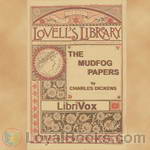 Mudfog and Other Sketches
Mudfog and Other Sketches
The Mudfog Papers was written by Victorian era novelist Charles Dickens and published from 1837–38 in the monthly literary serial Bentley's Miscellany, which he then edited. They were first published as a book as 'The Mudfog Papers and Other Sketches. The Mudfog Papers relates the proceedings of the fictional 'The Mudfog Society for the Advancement of Everything', a Pickwickian parody of the British Association for the Advancement of Science founded in York in 1831, one of the numerous Victorian learned societies dedicated to the advancement of Science... | |
 Christmas Stories From 'Household Words' And 'All The Year Round'
Christmas Stories From 'Household Words' And 'All The Year Round'
Twenty stories originally published in the Christmas editions of the magazines “Household Words” and “All The Year Round”. Some of the stories have little holiday sentiment and exhibit much of the indignation Dickens felt at the social and economic injustices of his day. Some of the stories were written in collaboration with other authors. The editor of this volume chose to omit those other chapters and include only Dickens' work. The result is that some of the stories are a bit choppy, not to say confusing. | |
 Christmas Books
Christmas Books
From 1843 to 1848, Charles Dickens wrote a series of five novellas to be published at Christmas. Most people are familiar with the first, "A Christmas Carol." The others are "The Chimes," "The Cricket on the Hearth," "The Battle of Life," and "The Haunted Man and the Ghost's Bargain." | |
 Haunted Man and the Ghost's Bargain (version 2)
Haunted Man and the Ghost's Bargain (version 2)
The last of Dickens' Christmas novellas (1848), The Haunted Man and the Ghost's Bargain centres around Professor Redlaw, a teacher of chemistry, whose personal life has been marred by sorrow and, he feels, by wrongs done to him in his past. He is haunted by his ghostly twin, who offers him the opportunity to forget completely all 'sorrow, wrong and trouble', claiming that this will make him happier. Redlaw wavers, but finally accepts this offer, discovering too late that there are conditions attached to it which cause him to infect with this unwanted 'gift' nearly everyone with whom he comes in contact... | |
 Life and Adventures of Nicholas Nickleby (Version 3)
Life and Adventures of Nicholas Nickleby (Version 3)
Nicholas Nickleby was Dickens's third novel following on from Pickwick Papers and Oliver twist. It has a cast of wonderful characters that include Wackford Squeers, the reprehensible and villainous headmaster whose reign of terror at his school in Yorkshire resulted in the abuse and deaths of many of his unwanted and orphaned children, Mr Vincent Crummles and his hilariously inept touring company, the munificent Cheeryble brothers, Ralph Nickleby, Nicholas's uncle, a mean spirited man who is driven... | |
 Christmas Carol - Condensed by the Author for his Dramatic Readings
Christmas Carol - Condensed by the Author for his Dramatic Readings
This very special abridged version was written and performed by Dickens himself during his American Tour of 1862. Without the more terrifying and dark elements of the full length novel, its hour and a half length, and its lighter, comedic style makes this a family listening experience suited for all ages. ( Michael Armenta) | |
 David Copperfield - Condensed by the Author for his Dramatic Readings in America
David Copperfield - Condensed by the Author for his Dramatic Readings in America
"This short collection of 6 selected scenes from "David Copperfield" were abridged and performed by Dickens himself during his American Tour of 1867 and 1868." | |
By: Charles E. Carryl (1841-1920) | |
|---|---|
 Davy and the Goblin
Davy and the Goblin
Eight-year-old Davy reads Lewis Carroll's novel Alice's Adventures in Wonderland and begins to get very sleepy. Suddenly a goblin appears in the fire and takes Davy on a "believing voyage" much like Alice's own adventures in Wonderland, where he meets many characters from fantasy and literature. | |
By: Charles G. D. Roberts (1860-1943) | |
|---|---|
 Hoof and Claw
Hoof and Claw
These 14 short stories about animals are superb examples of Roberts smooth storytelling style. Knows as the Father of Canadian Poetry, he loved to also write in prose about the wilderness and the personalities of the animals to be found there as well as the exciting things they are capable of. Bears, White Wolves, Lynxs, hawks and yes, cattle are just a few of the animals written about. | |
By: Charles Goddard (1879-1951) | |
|---|---|
 The Perils of Pauline
The Perils of Pauline
The Perils of Pauline is one of the first damsel in distress serials. The story is complete with undaunted hero, courageous damsel, unscrupulous villains galore, and other worldly interest. Before getting married, Pauline wants to experience the world and have adventures. When her guardian dies and leaves her an estate in trust of his secretary, adventures suddenly become more hazardous. Pauline charters aeroplanes, meets untrustworthy pirates, braves dangerous China Town, flies in a hot air balloon, adventures in the Wild West, encounters international spies, and escapes many other perils with the aid of her would-be fiancé, Harry, and an Egyptian mummy. | |
By: Charles Goddard and Paul Dicky | |
|---|---|
 The Ghost Breaker
The Ghost Breaker
The Ghost Breaker is a drama and haunted house horror complete with heroes, villains, and a Princess. The Ghost Breaker was originally a screenplay and would later be made a drama film directed by Cecil B. DeMille. | |
By: Charles Godfrey Leland (1824-1903) | |
|---|---|
 Algonquin Legends of New England or Myths and Folk Lore of the Micmac, Passamaquoddy, and Penobscot Tribes
Algonquin Legends of New England or Myths and Folk Lore of the Micmac, Passamaquoddy, and Penobscot Tribes
This work, then, contains a collection of the myths, legends, and folk-lore of the principal Wabanaki, or Northeastern Algonquin, Indians; that is to say, of the Passamaquoddies and Penobscots of Maine, and of the Micmacs of New Brunswick. All of this material was gathered directly from Indian narrators, the greater part by myself, the rest by a few friends; in fact, I can give the name of the aboriginal authority for every tale except one. | |
By: Charles H. Spurgeon (1834-1892) | |
|---|---|
 All of Grace
All of Grace
HE WHO SPOKE and wrote this message will be greatly disappointed if it does not lead many to the Lord Jesus. It is sent forth in childlike dependence upon the power of God the Holy Ghost, to use it in the conversion of millions, if so He pleases. No doubt many poor men and women will take up this little volume, and the Lord will visit them with grace. To answer this end, the very plainest language has been chosen, and many homely expressions have been used. But if those of wealth and rank should glance at this book, the Holy Ghost can impress them also; since that which can be understood by the unlettered is none the less attractive to the instructed... | |
By: Charles King | |
|---|---|
 The Daughter of the Sioux,
The Daughter of the Sioux,
Charles King (1844 – 1933) was a United States soldier and a distinguished writer. He was the son of Civil War general Rufus King and great grandson of Rufus King, one of the signers of the Declaration of Independence. He graduated from West point in 1866 and served in the Army during the Indian Wars under George Crook. He was wounded in the arm forcing his retirement from the regular army. During this time he became acquainted with Buffalo Bill Cody. King would later write scripts for several of Cody’s silent films... | |
By: Charles Kingsley (1819-1875) | |
|---|---|
 The Water-Babies
The Water-Babies
First published in 1863, The Water Babies by Rev Charles Kingsley became a Victorian children's classic along with J.M. Barrie's Peter Pan and Lewis Caroll's Alice books. It is an endearing and entertaining novel that can equally be enjoyed by adult readers as well. However, it fell out of favor in later years since it contained many ideas that are considered politically incorrect and offensive today from a humanitarian perspective. The Water Babies, A Fairy Tale for a Land Baby to give the book its complete title tells the story of Tom, a young orphan chimney-sweep in Victorian London... | |
 The Heroes, or Greek Fairy Tales for my Children
The Heroes, or Greek Fairy Tales for my Children
The Heroes, or Greek Fairy Tales for my Children by Charles Kingsley is a collection of three Greek mythology stories: Perseus, The Argonauts, and Theseus. The author had a great fondness for Greek fairy tales and believed the adventures of the characters would inspire children to achieve higher goals with integrity. | |
 Hypatia
Hypatia
Charles Kingsley (June 12 1819 - January 23 1875) was an English divine, university professor, historian, and novelist, particularly associated with the West Country and north-east Hampshire. As a novelist, his chief power lay in his descriptive faculties, which are evident in this novel as he pictures the Egyptian desert and the ancient city Alexandria. Hypatia, 1st published in 1853, is set in 5th Century A.D. Egypt. It centers upon a young orphan monk from a desert monastery who feels called to continue his religious life in the city... | |
By: Charles Knight (1791-1873) | |
|---|---|
 Mind Amongst the Spindles
Mind Amongst the Spindles
Lowell Massachusetts was founded in the 1820s as a planned manufacturing center for textiles and is located along the rapids of the Merrimack River, 25 miles northwest of Boston. By the 1850s Lowell had the largest industrial complex in the United States. The textile industry wove cotton produced in the South. In 1860, there were more cotton spindles in Lowell than in all eleven states combined that would form the Confederacy. Mind Amongst the Spindles is a selection of works from the Lowell Offering, a monthly periodical collecting contributed works of poetry and fiction by the female workers of the textile mills... | |
By: Charles L. Fontenay | |
|---|---|
 Rebels of the Red Planet
Rebels of the Red Planet
Dark Kensington had been dead for twenty-five years. It was a fact; everyone knew it. Then suddenly he reappeared, youthful, brilliant, ready to take over the Phoenix, the rebel group that worked to overthrow the tyranny that gripped the settlers on Mars.The Phoenix had been destroyed not once, not twice, but three times! But this time the resurrected Dark had new plans, plans which involved dangerous experiments in mutation and psionics.And now the rebels realized they were in double jeopardy.... | |